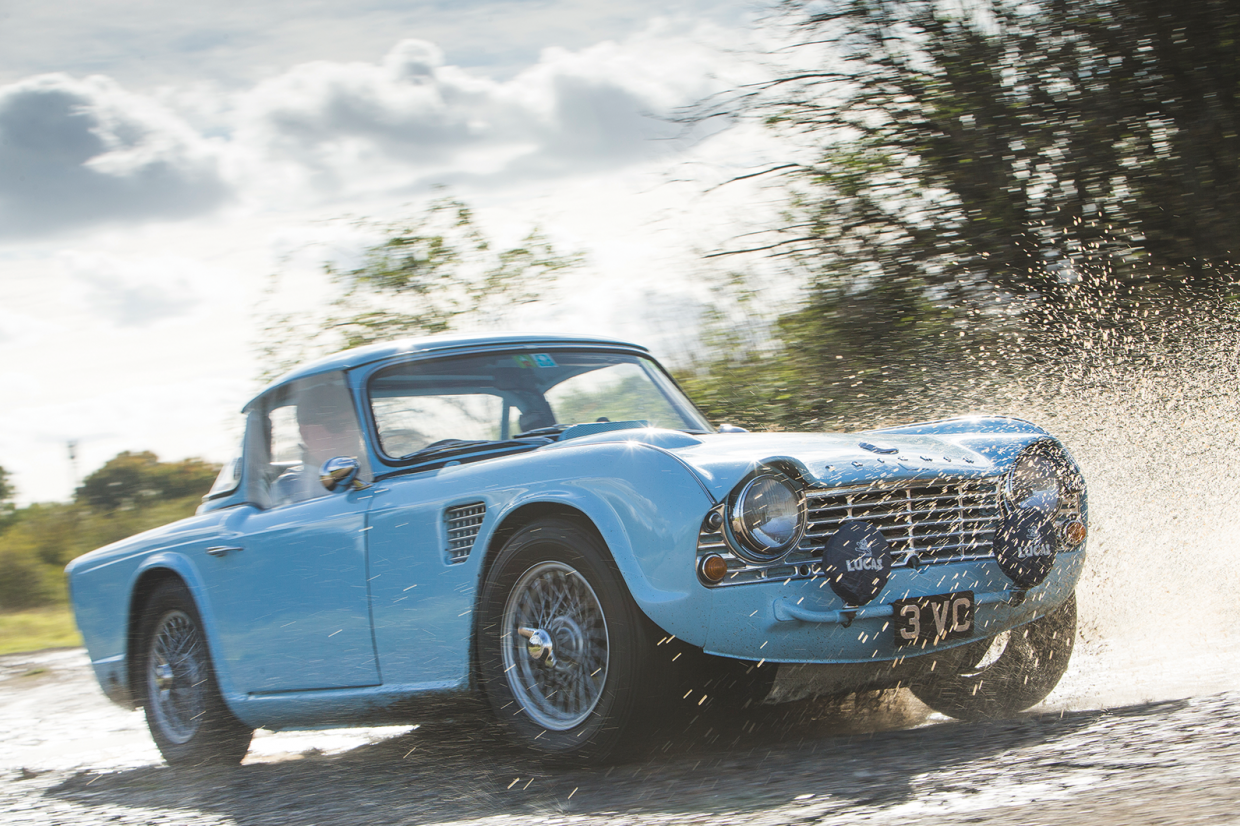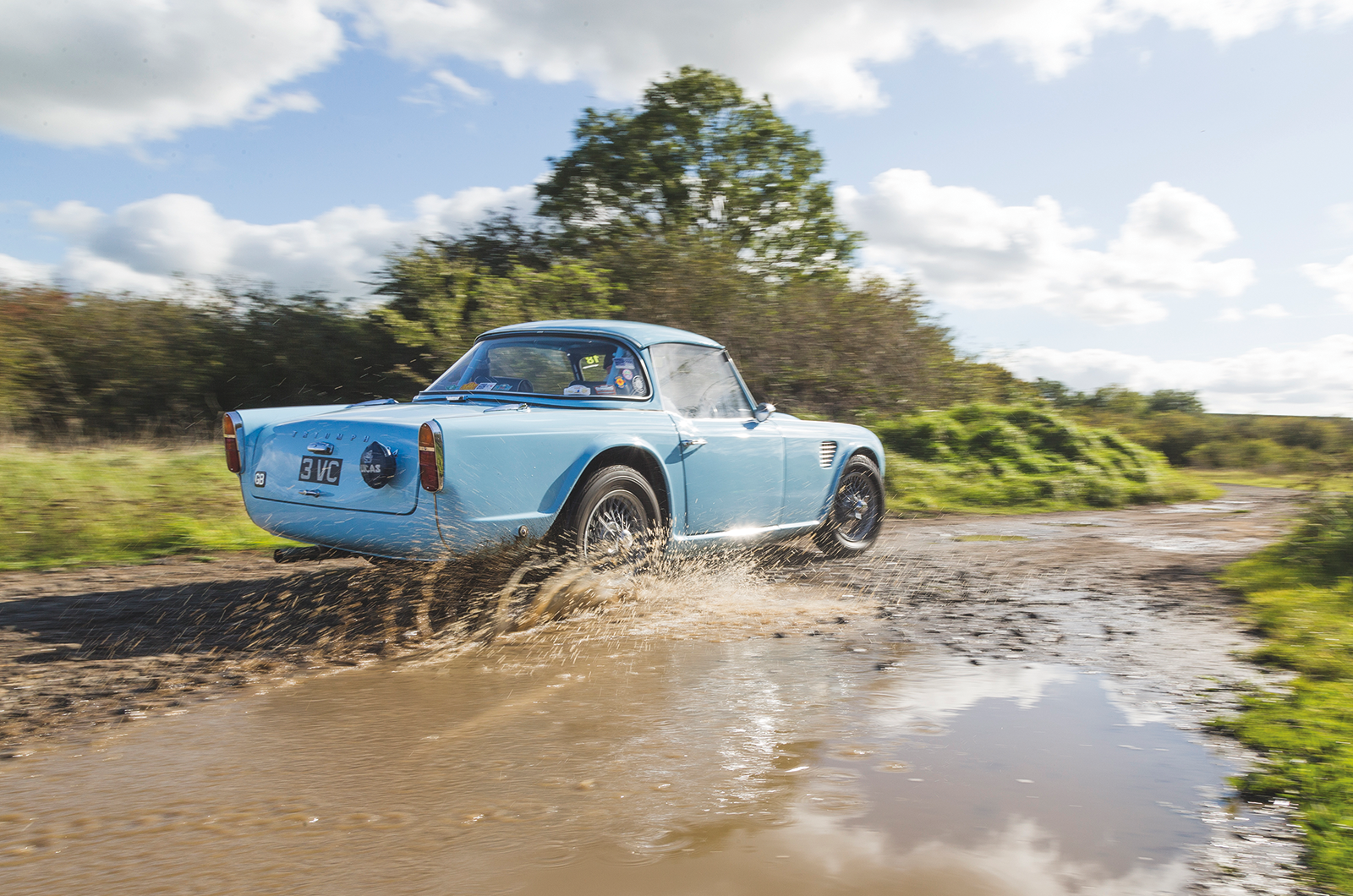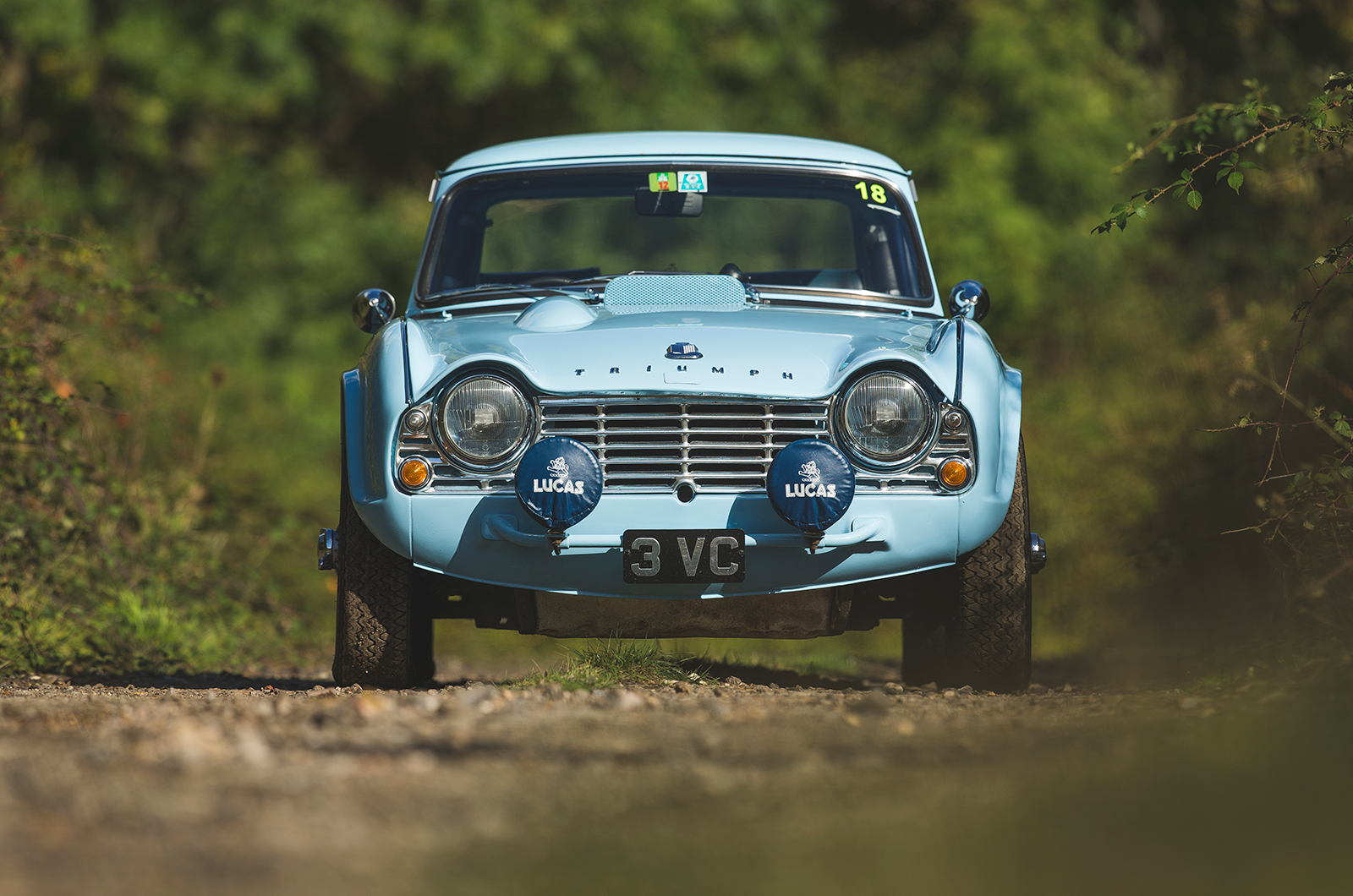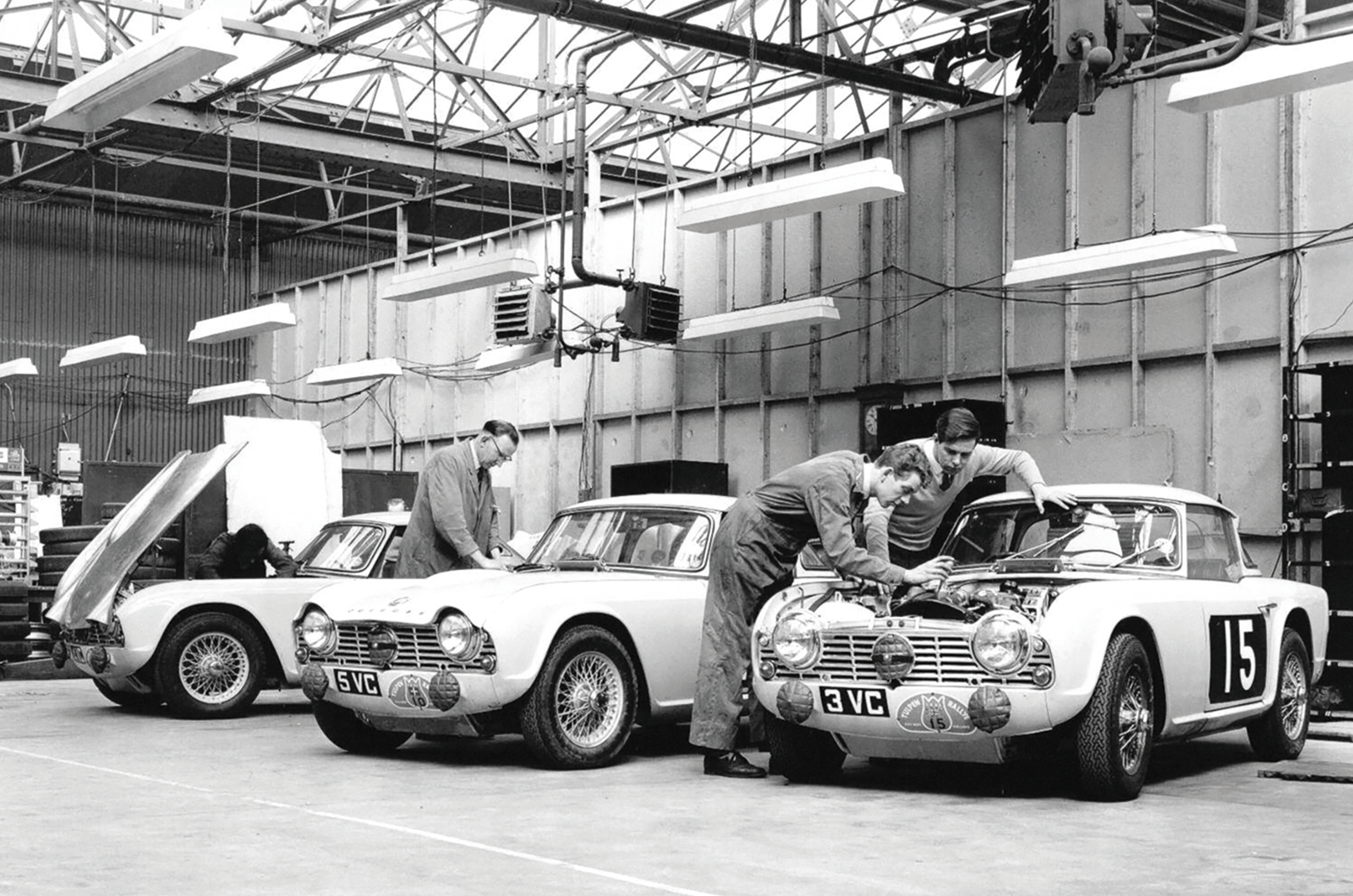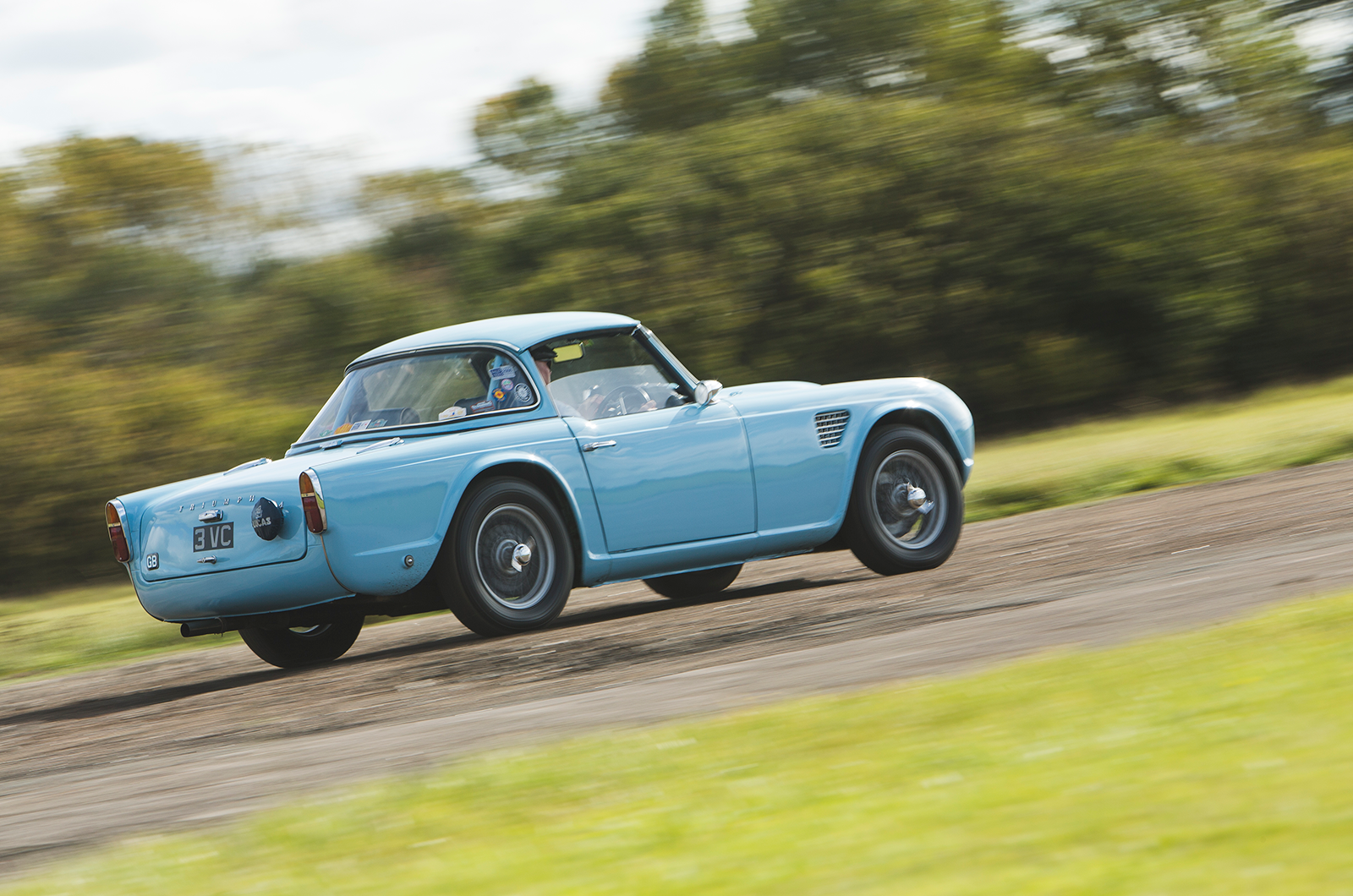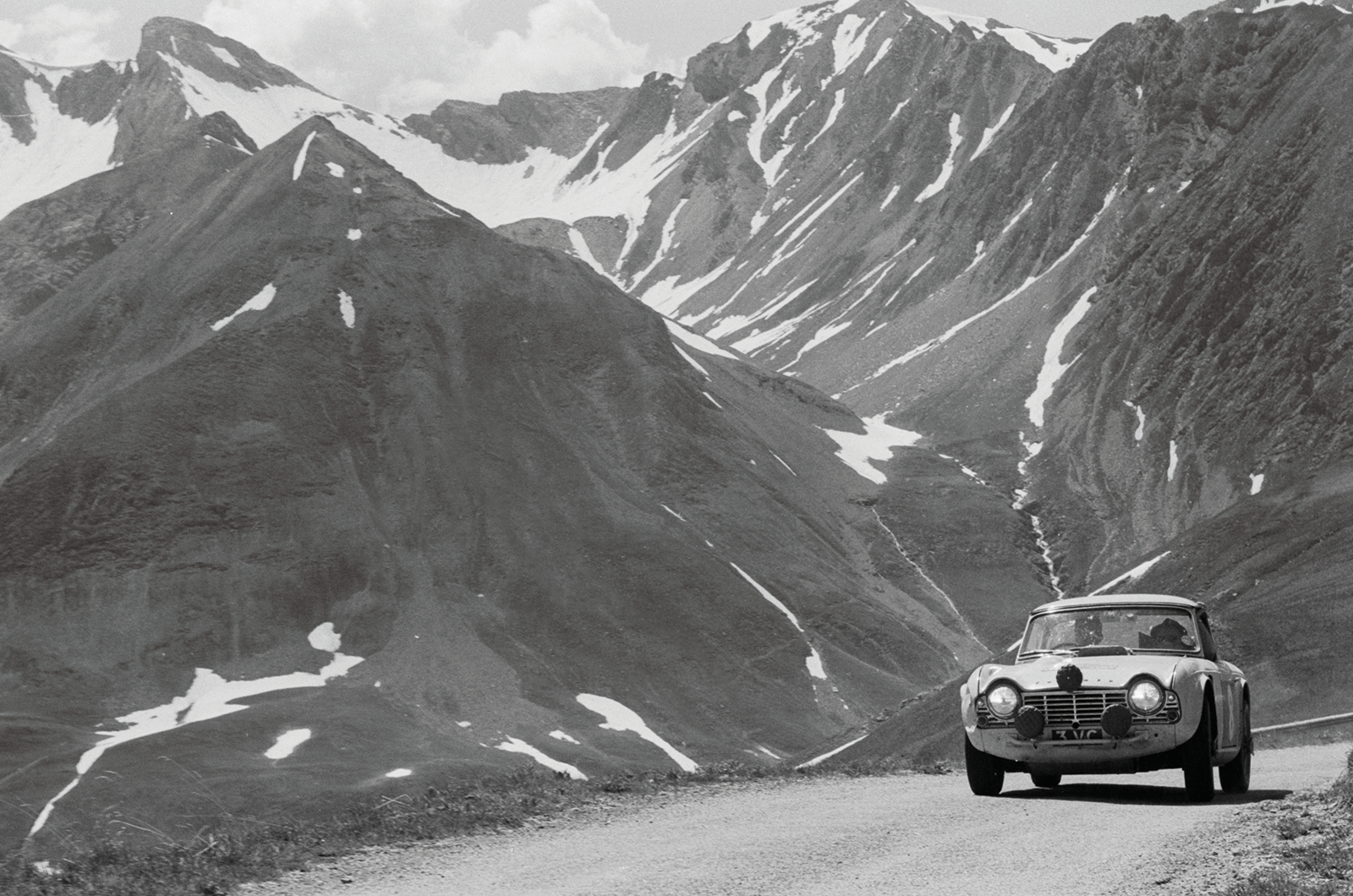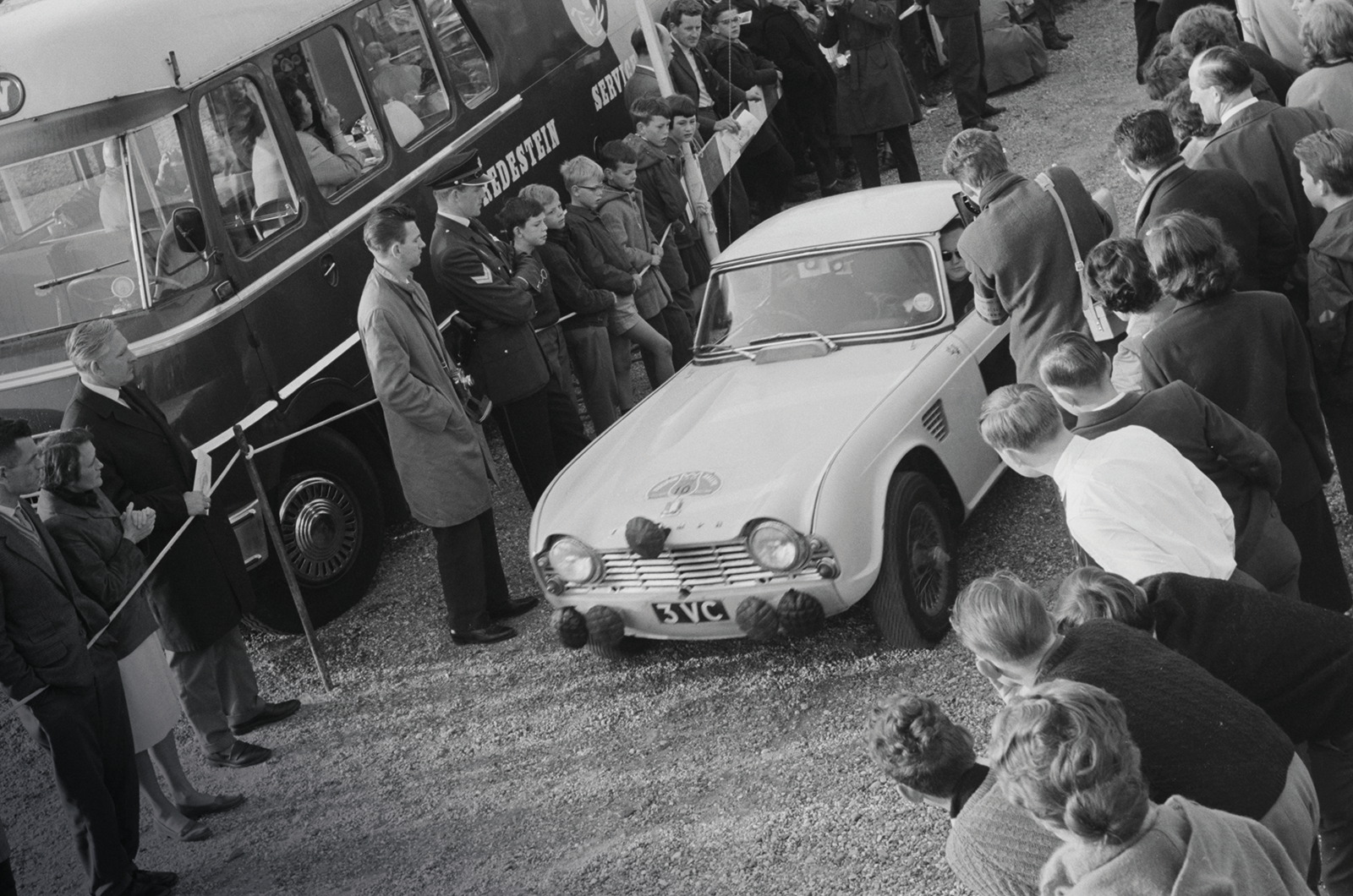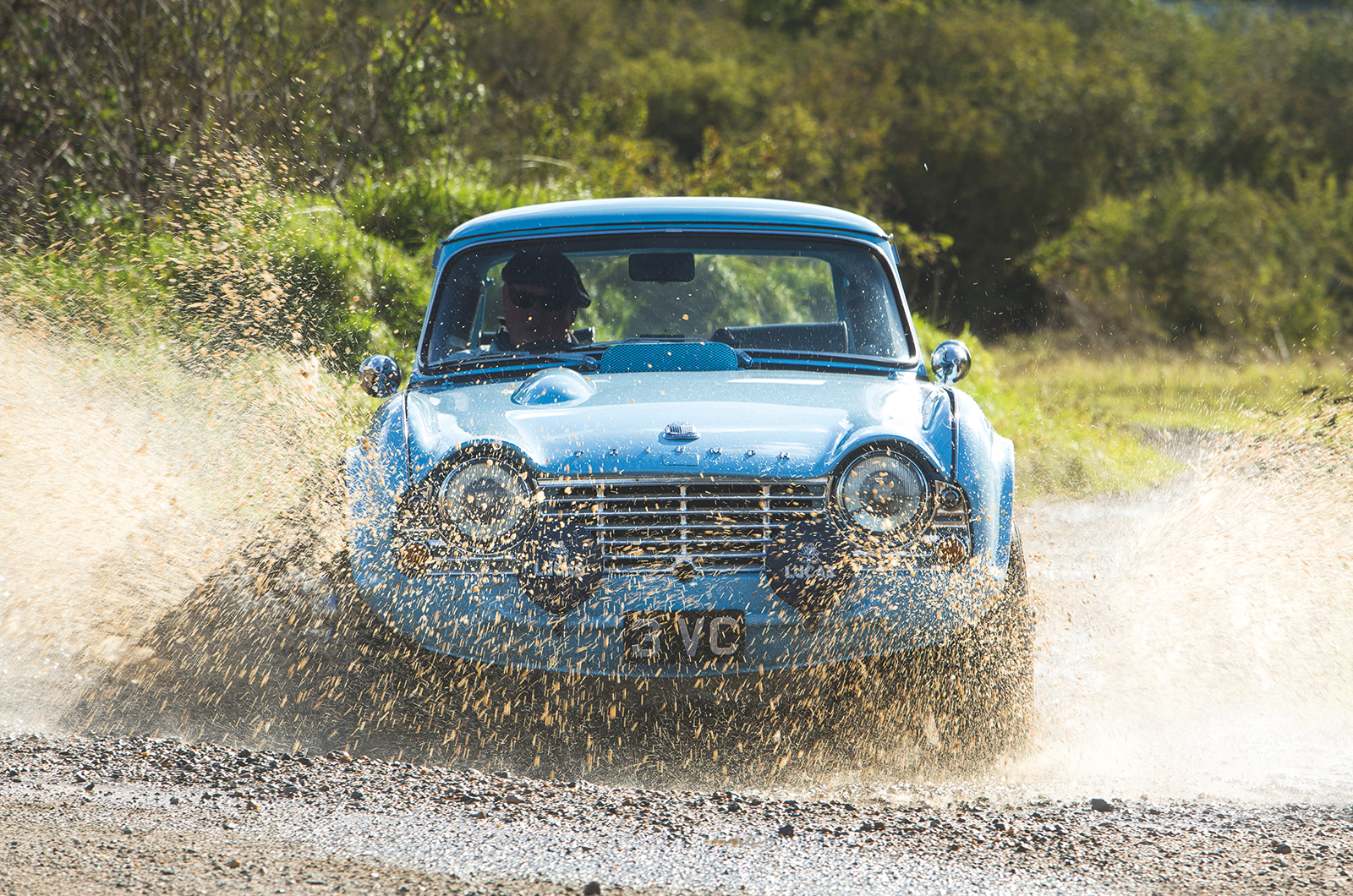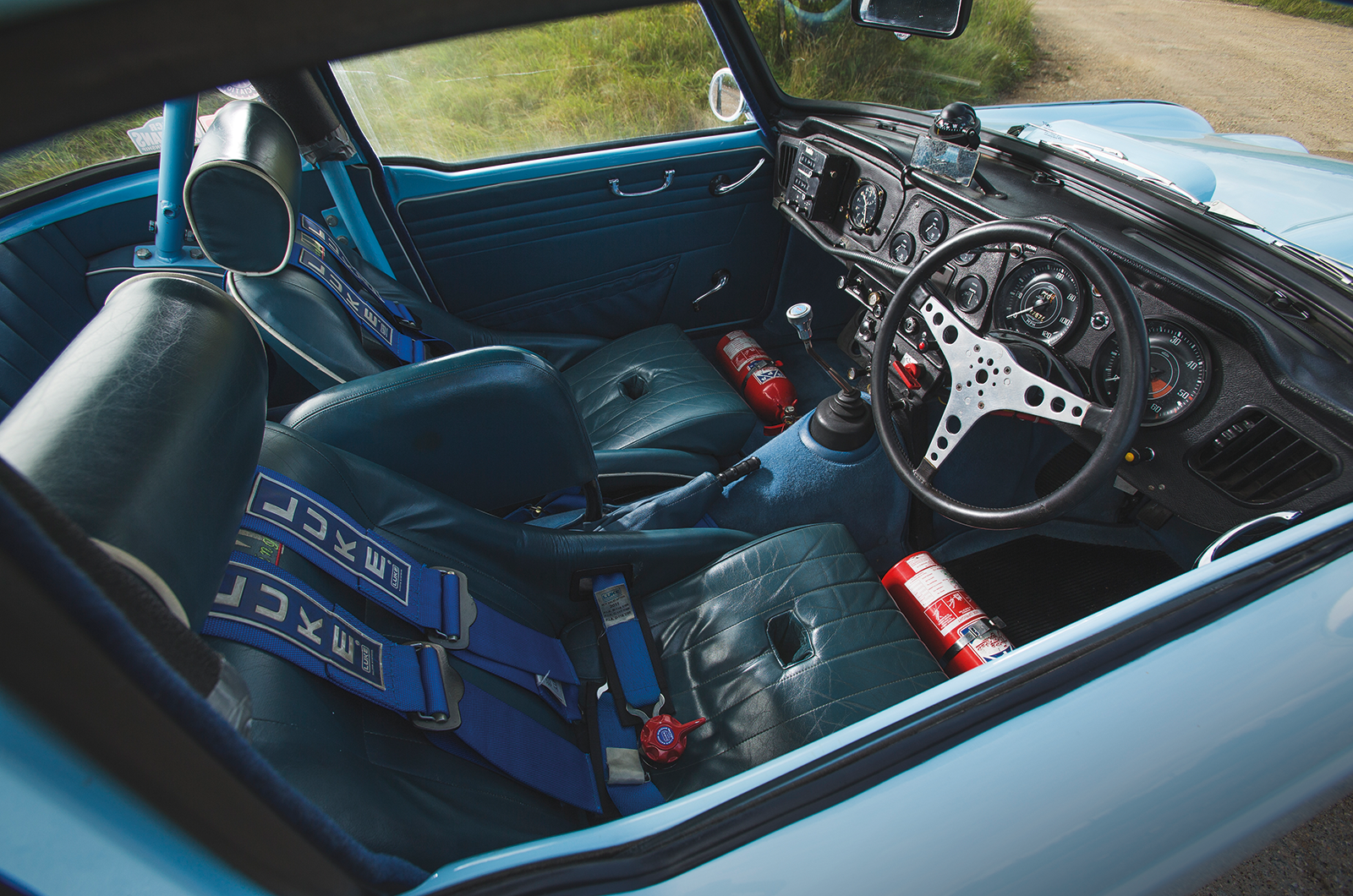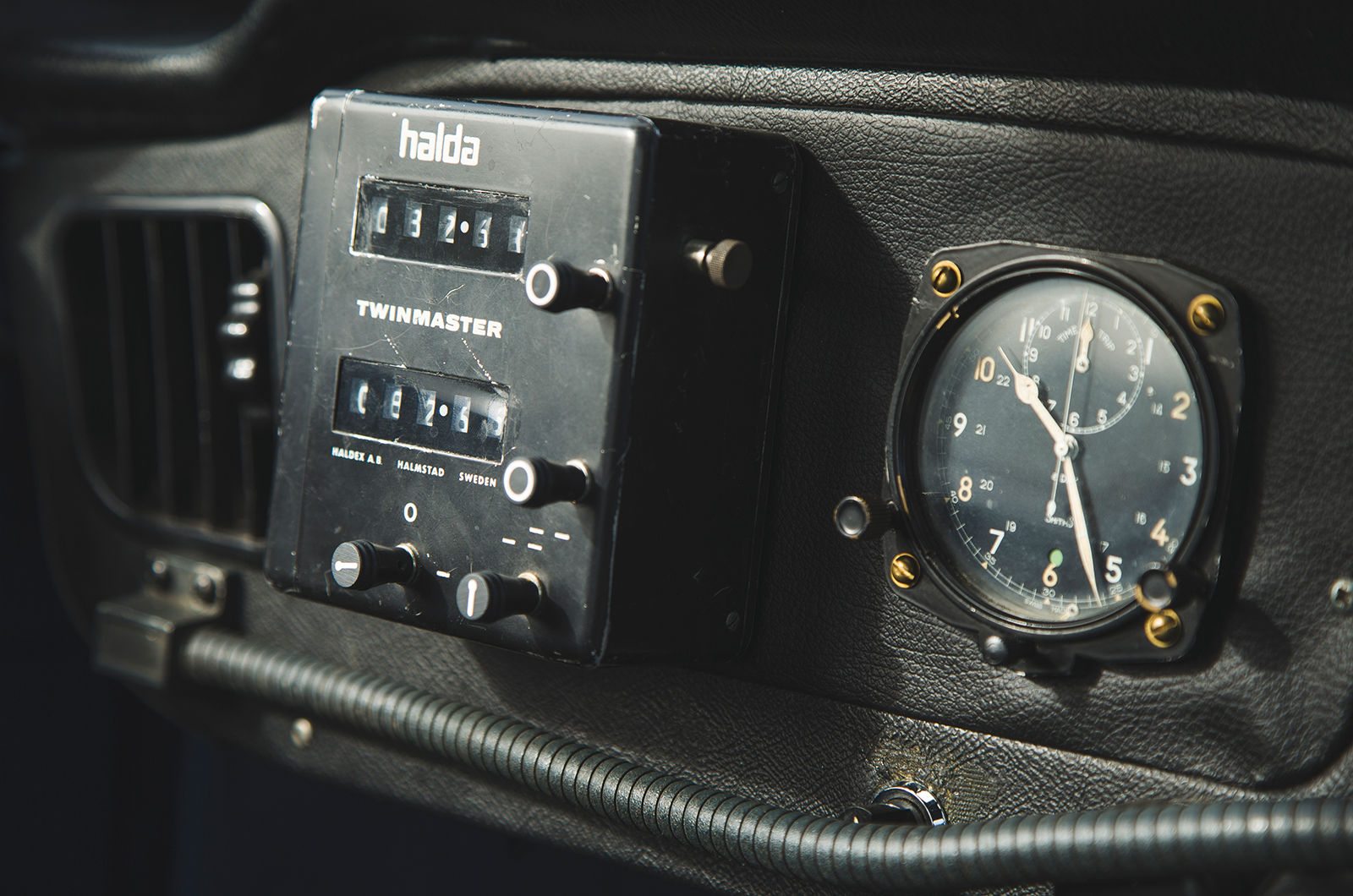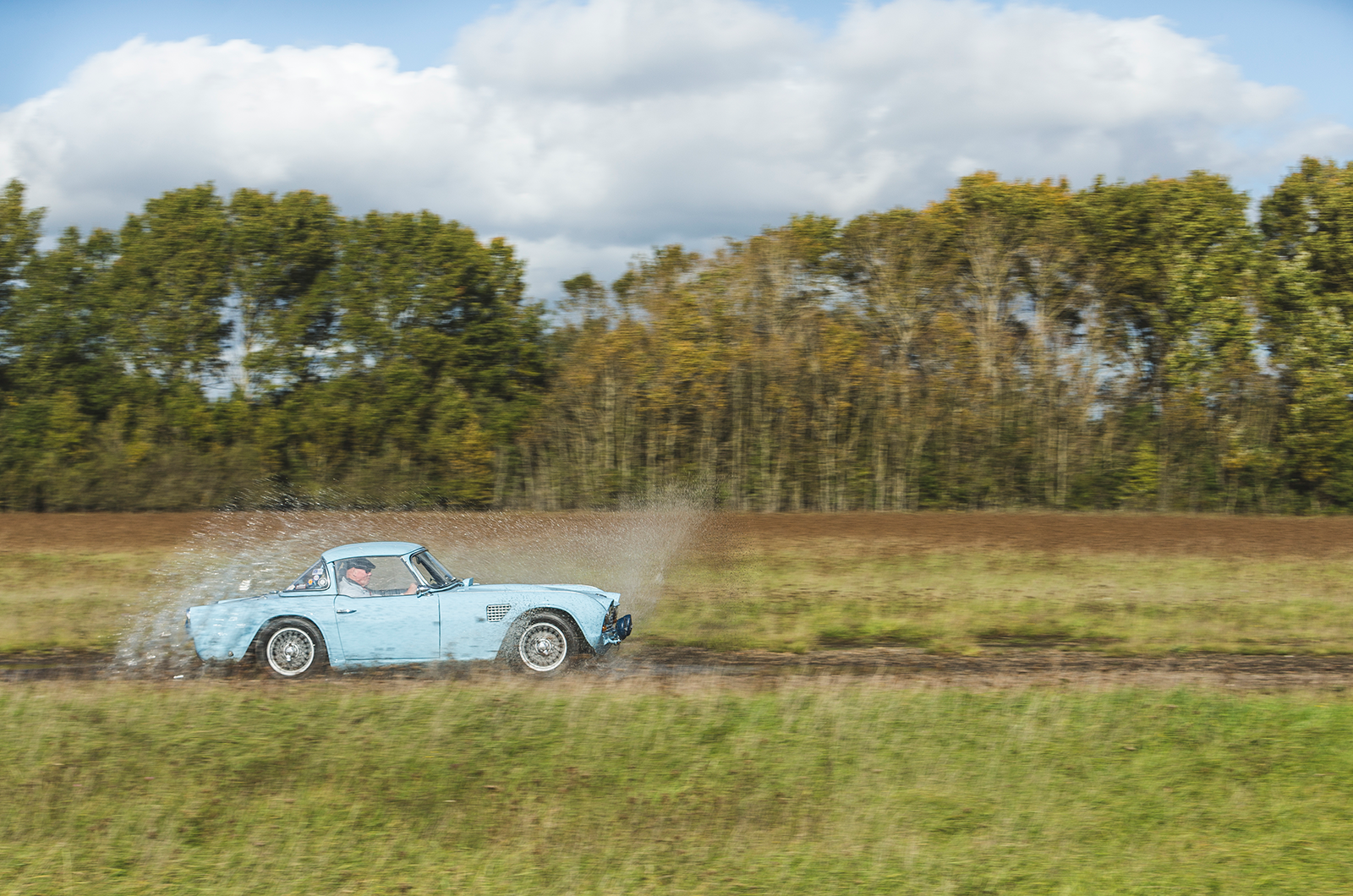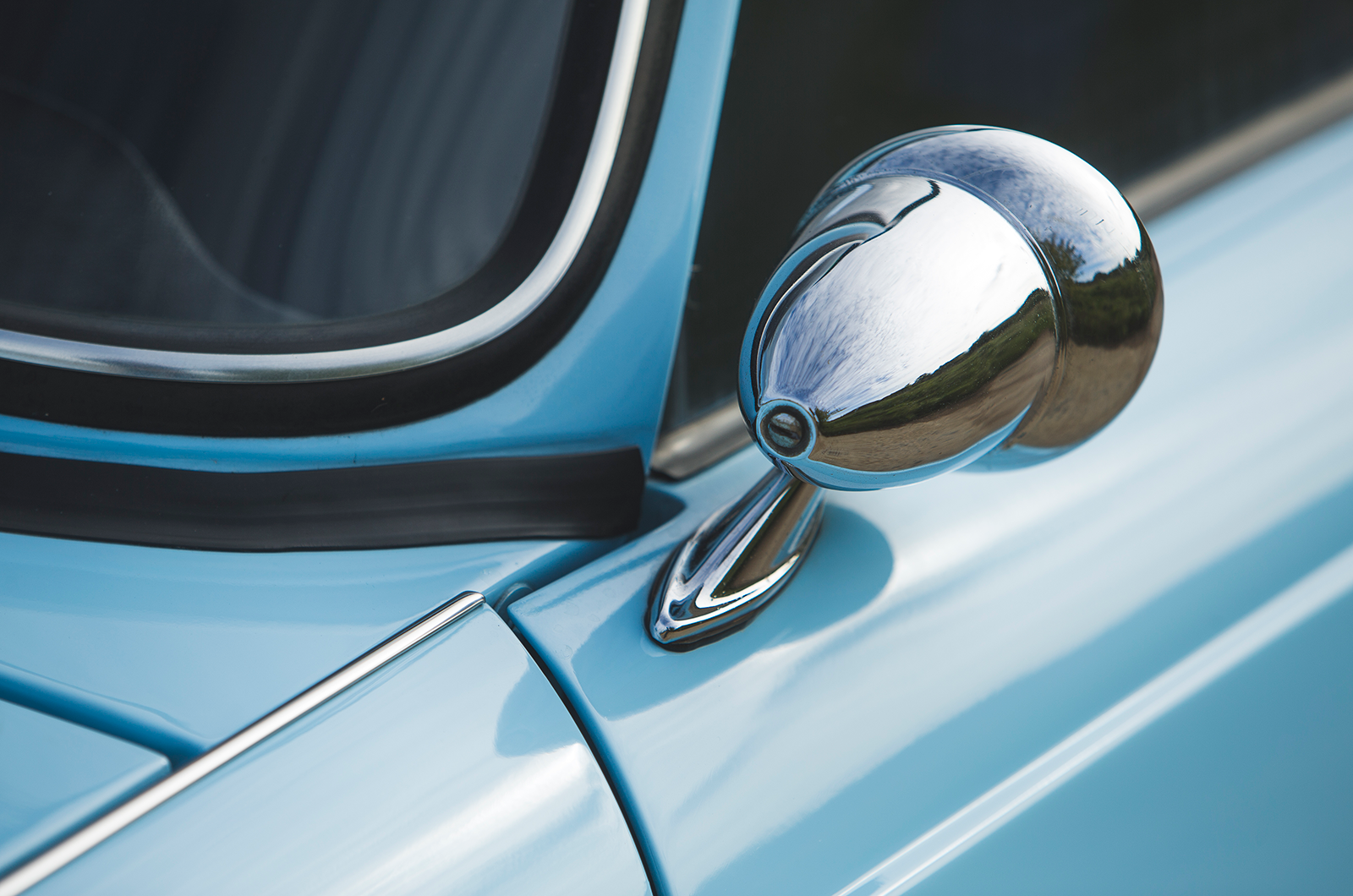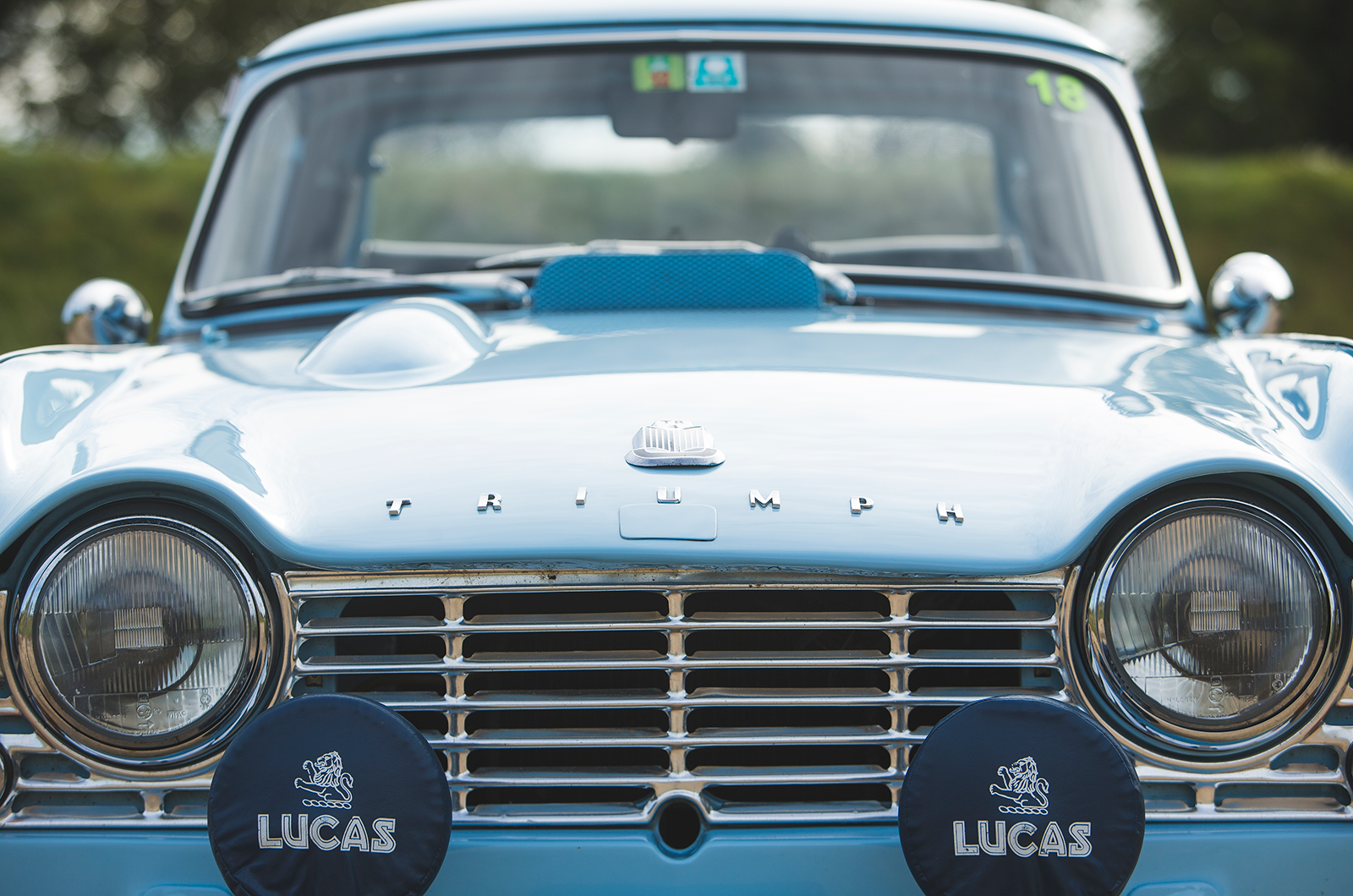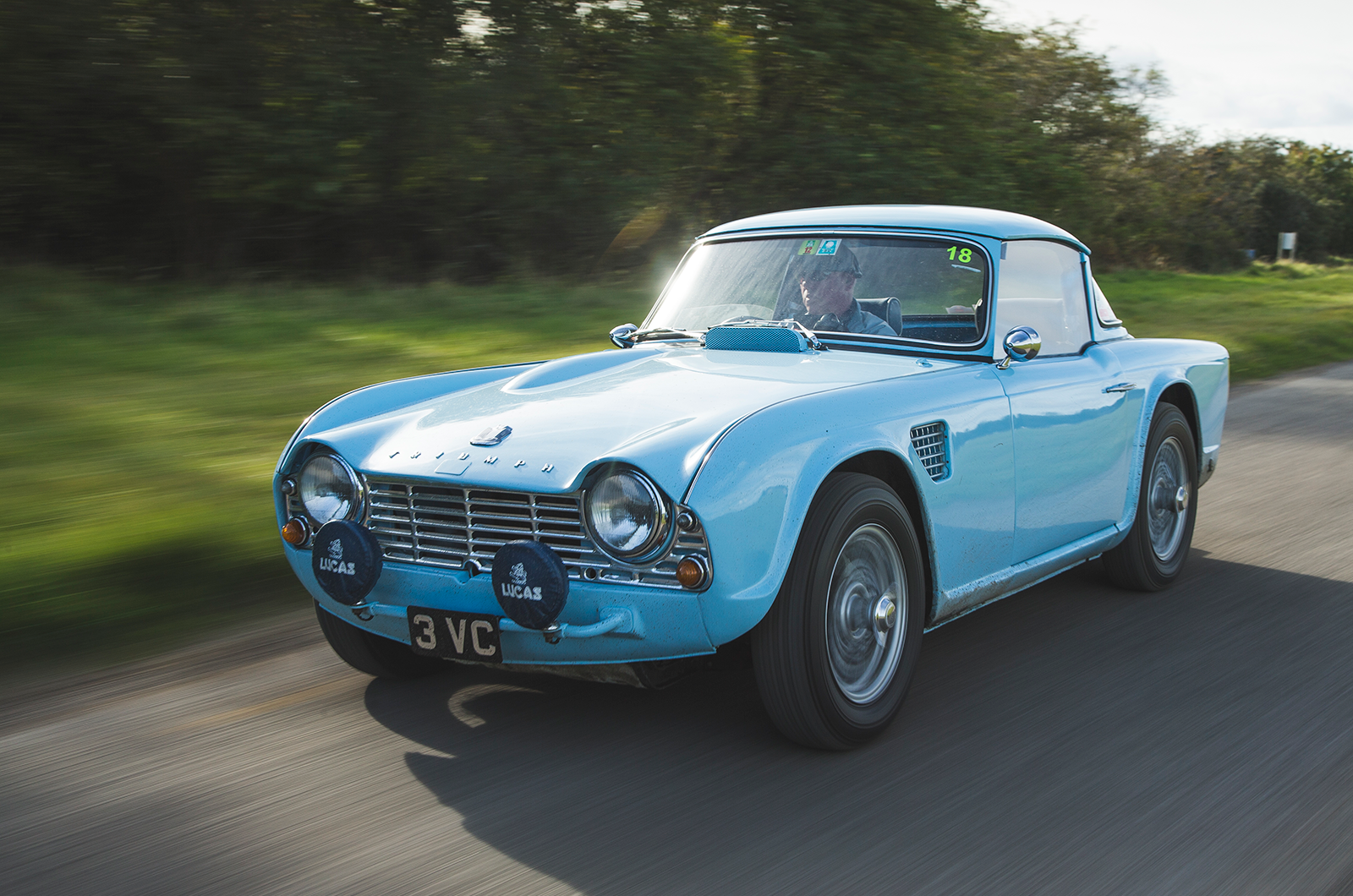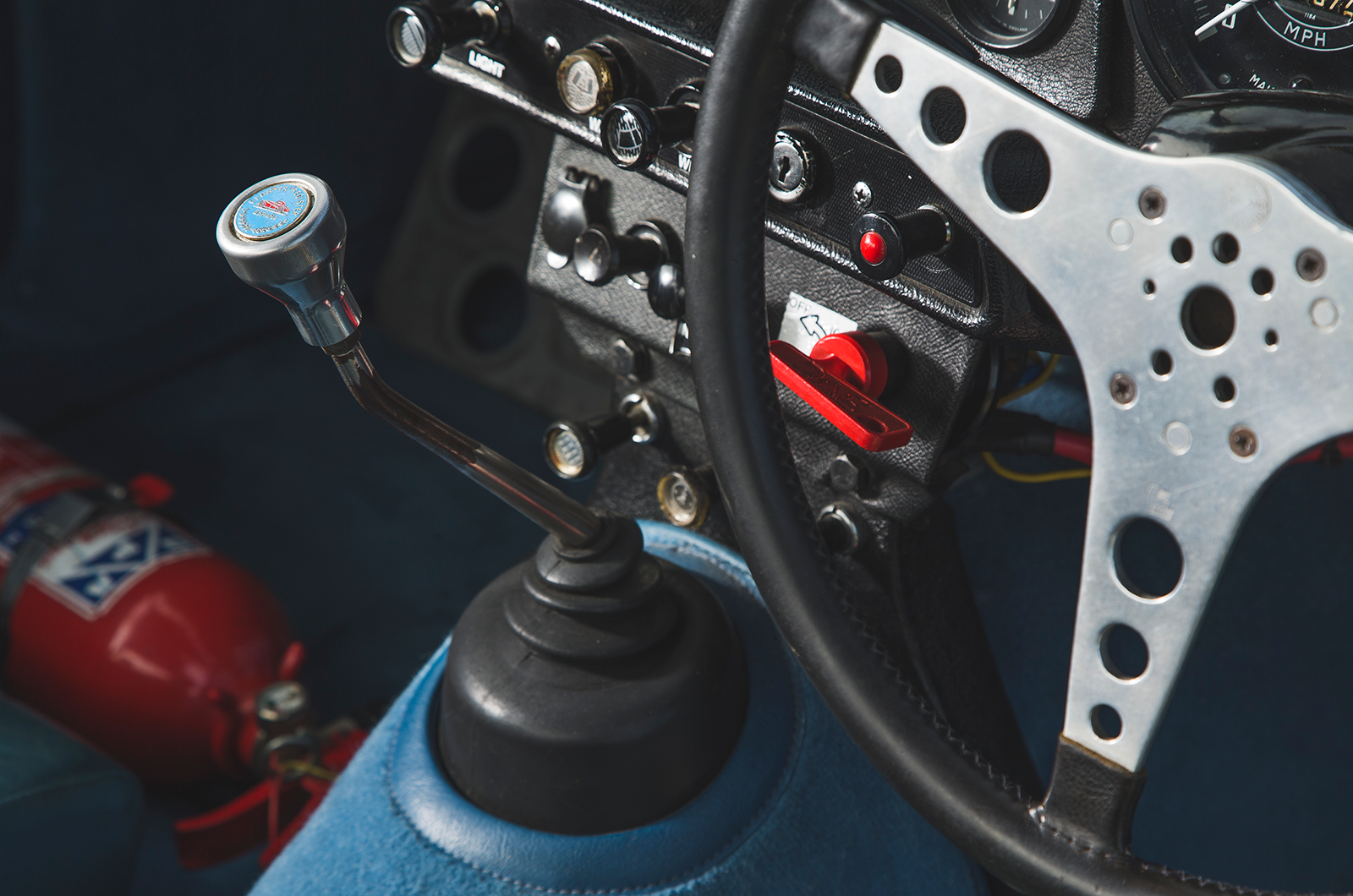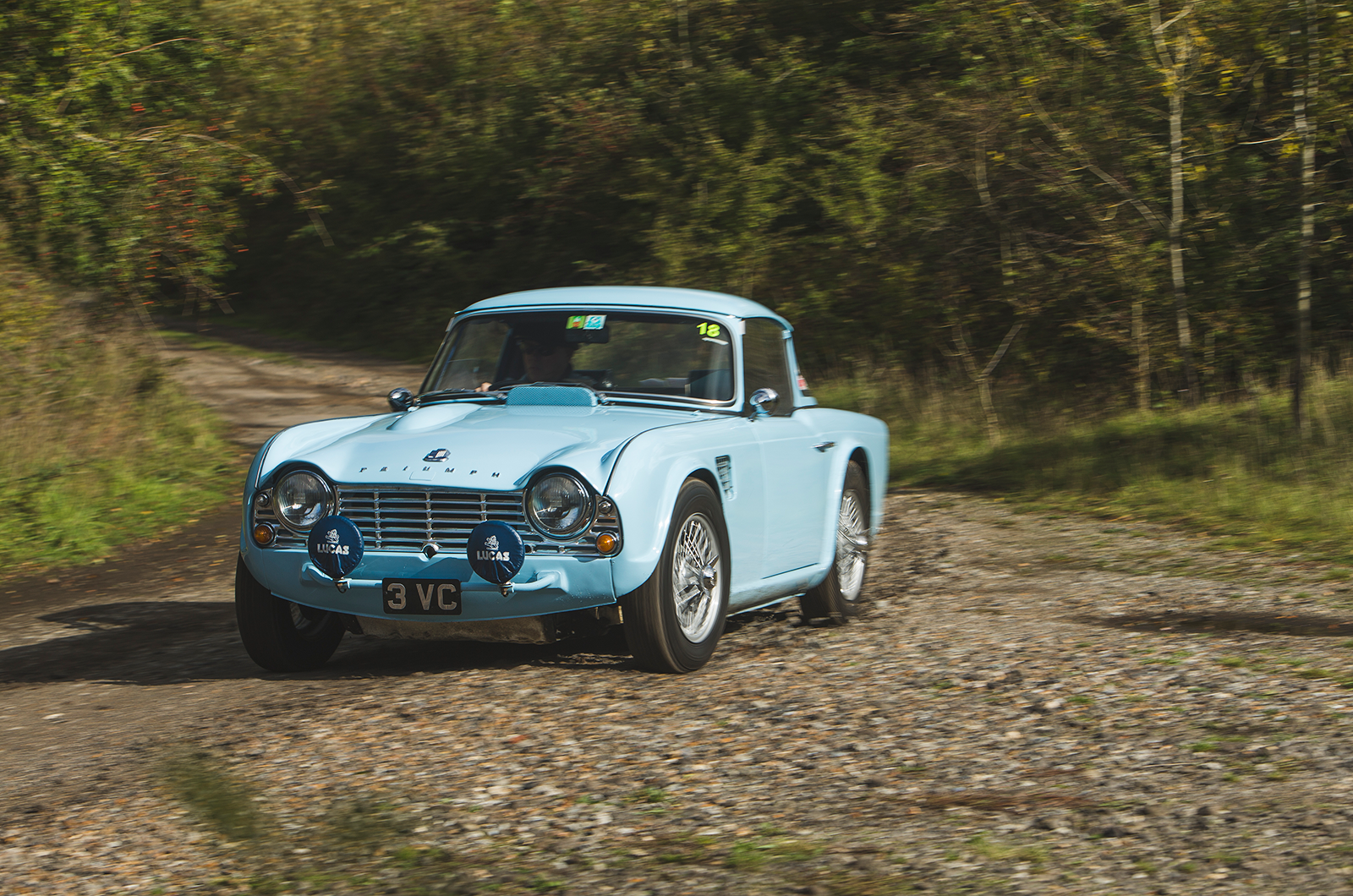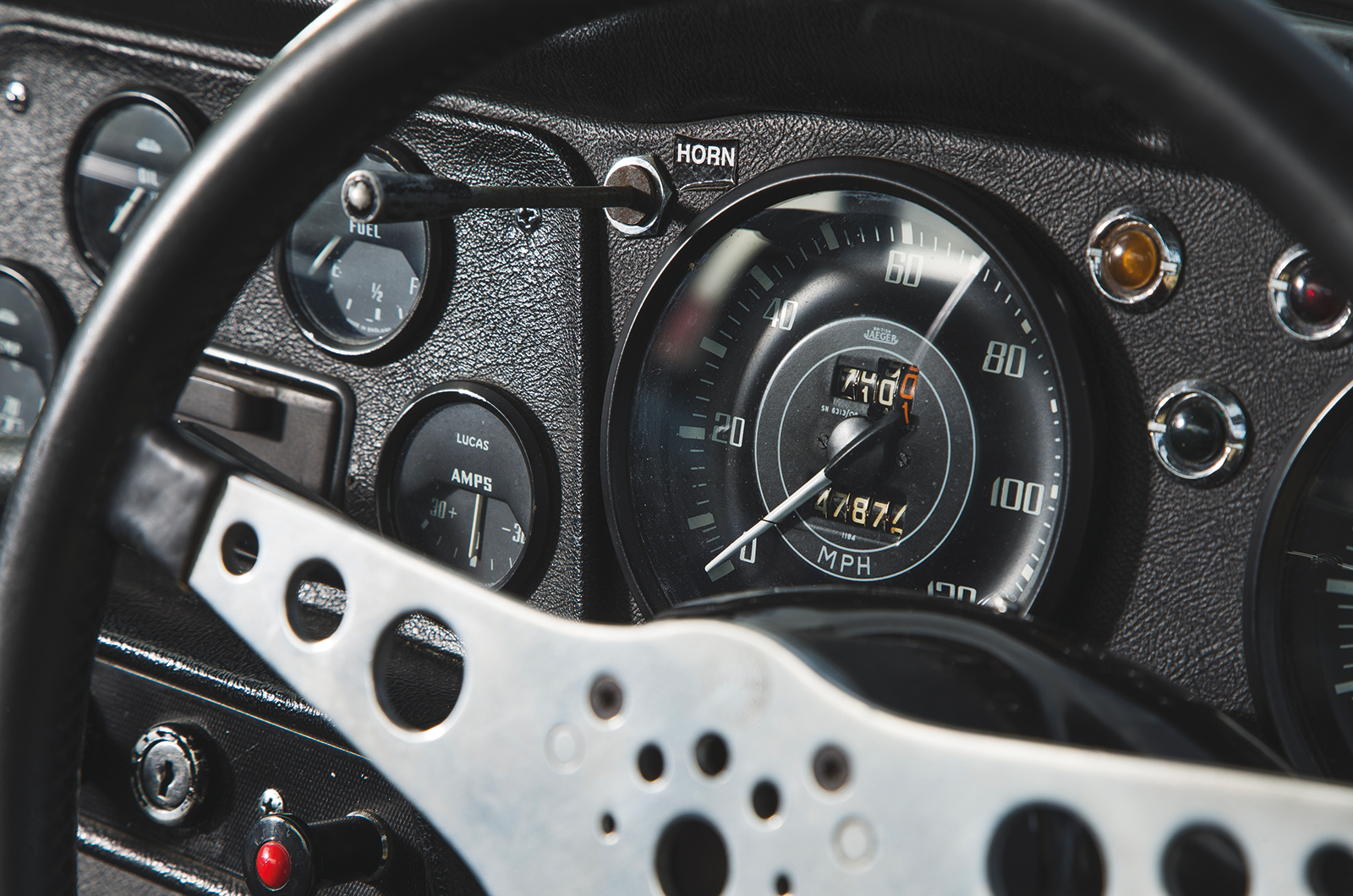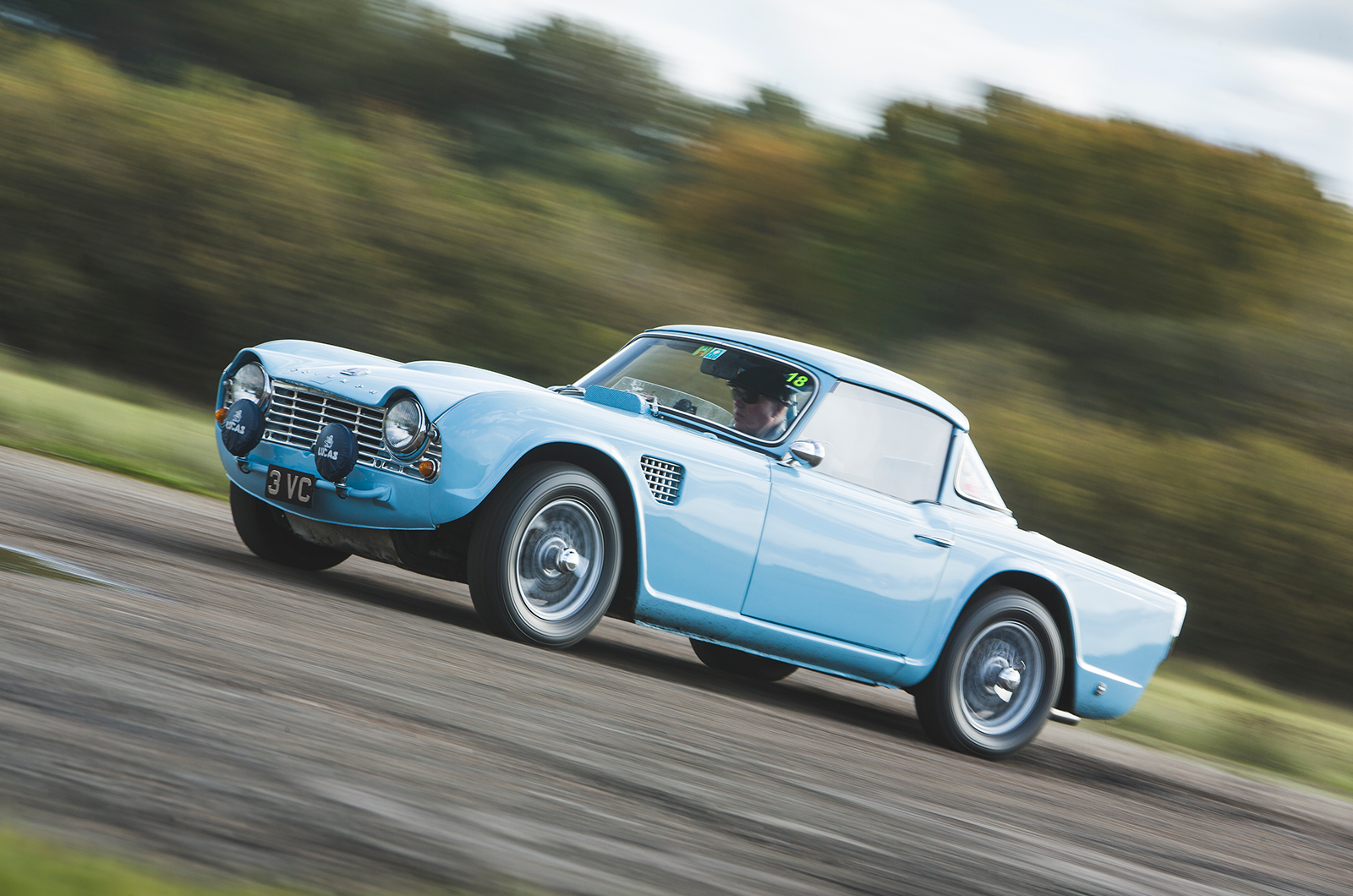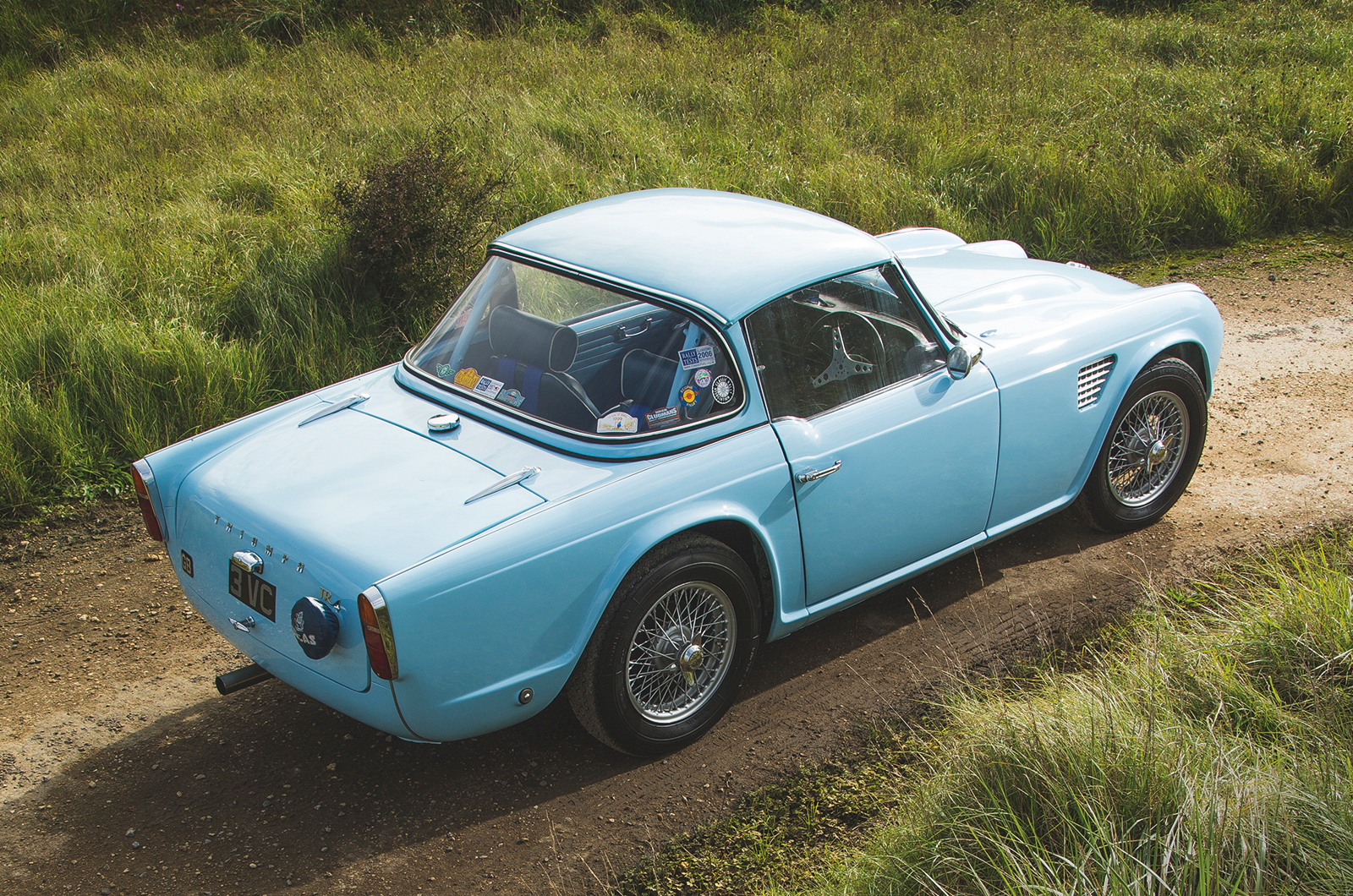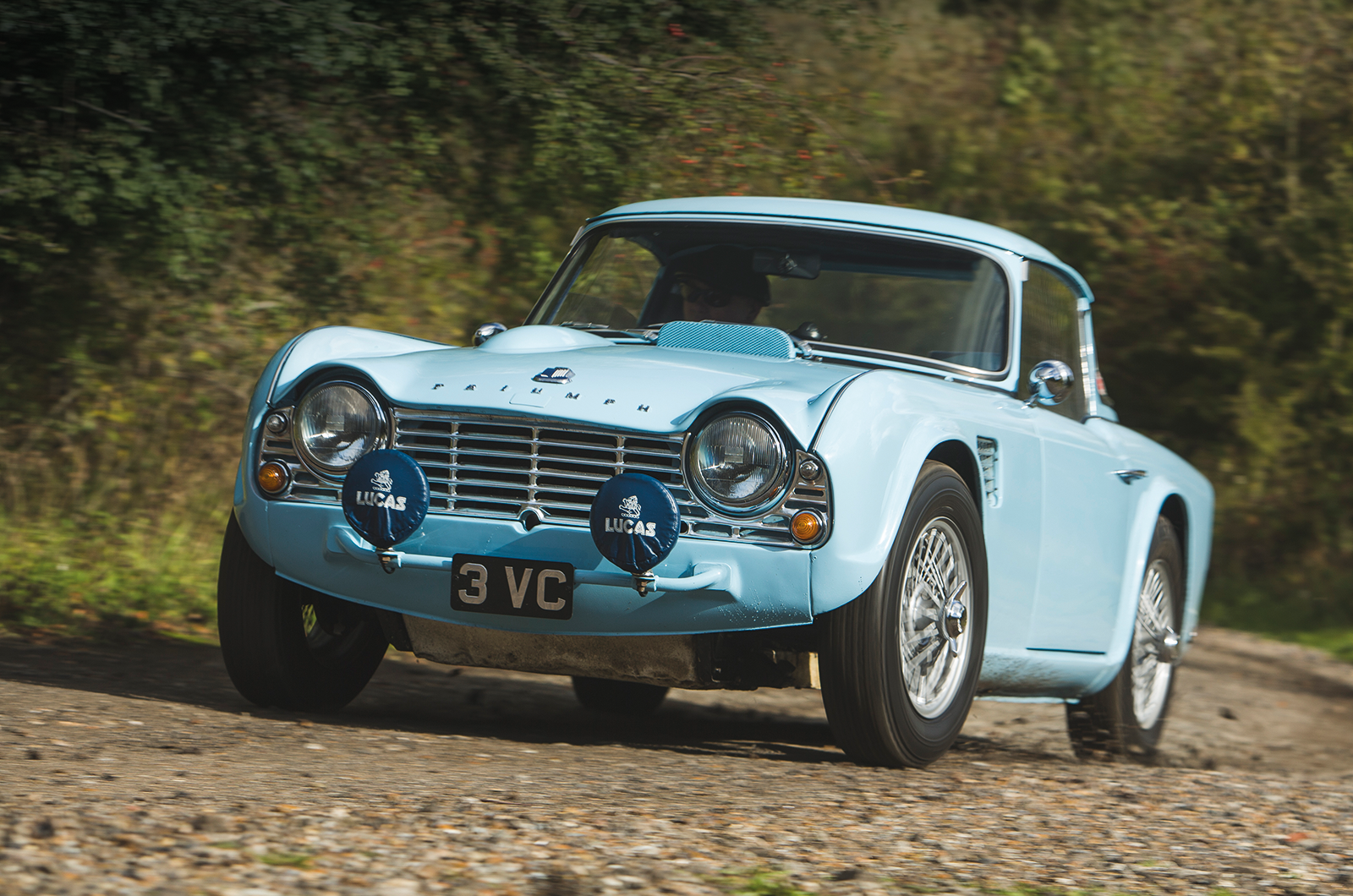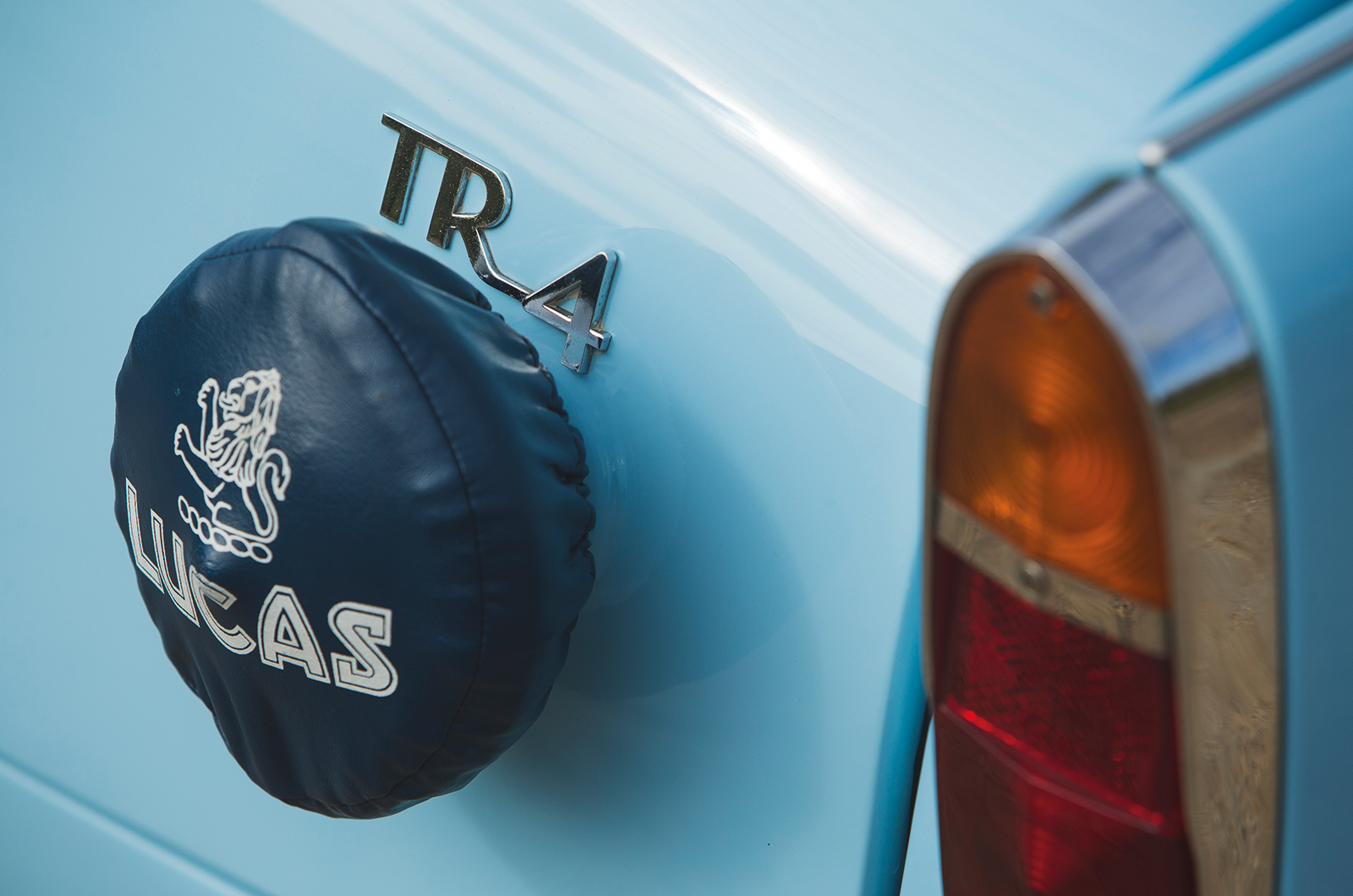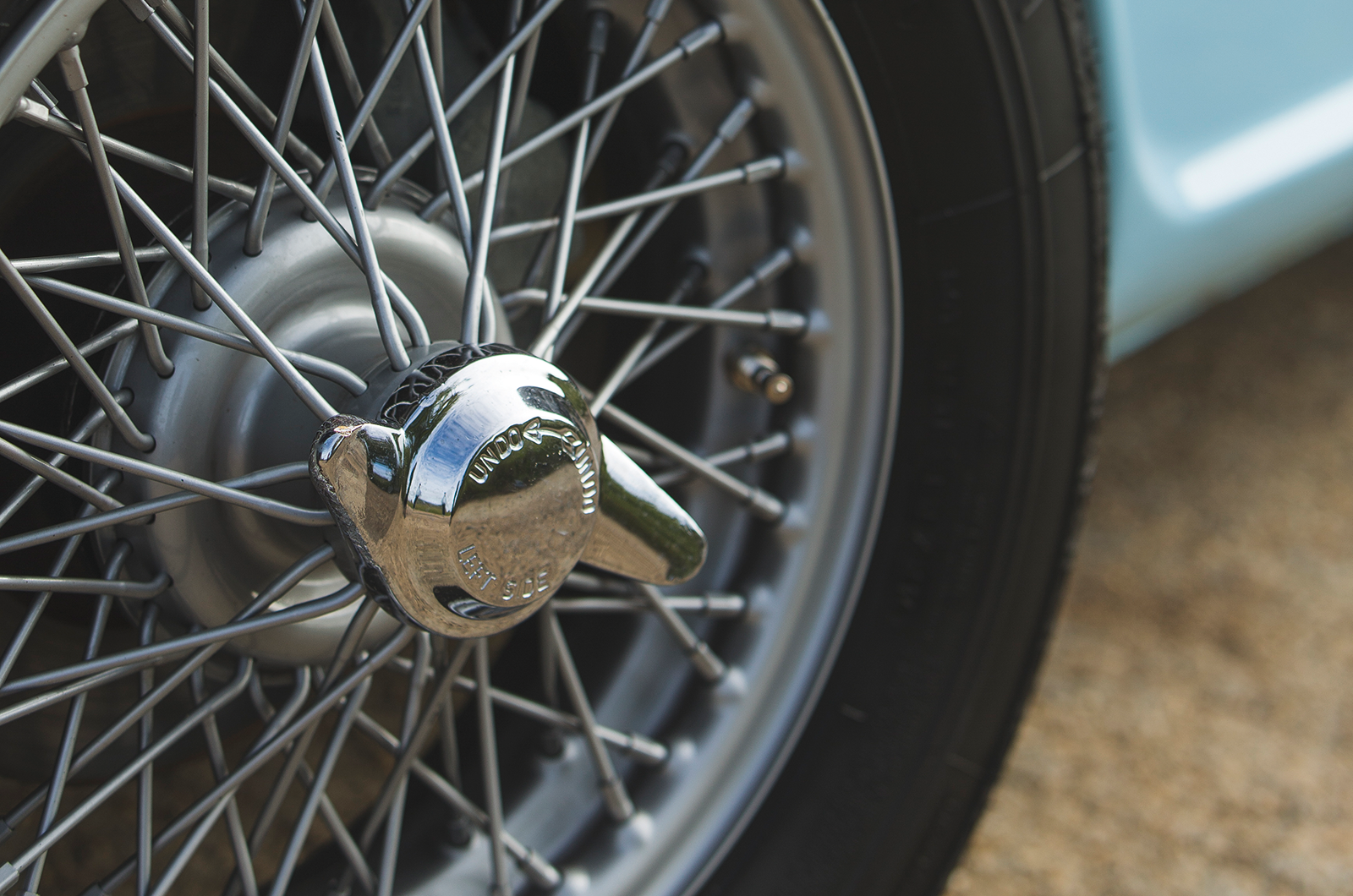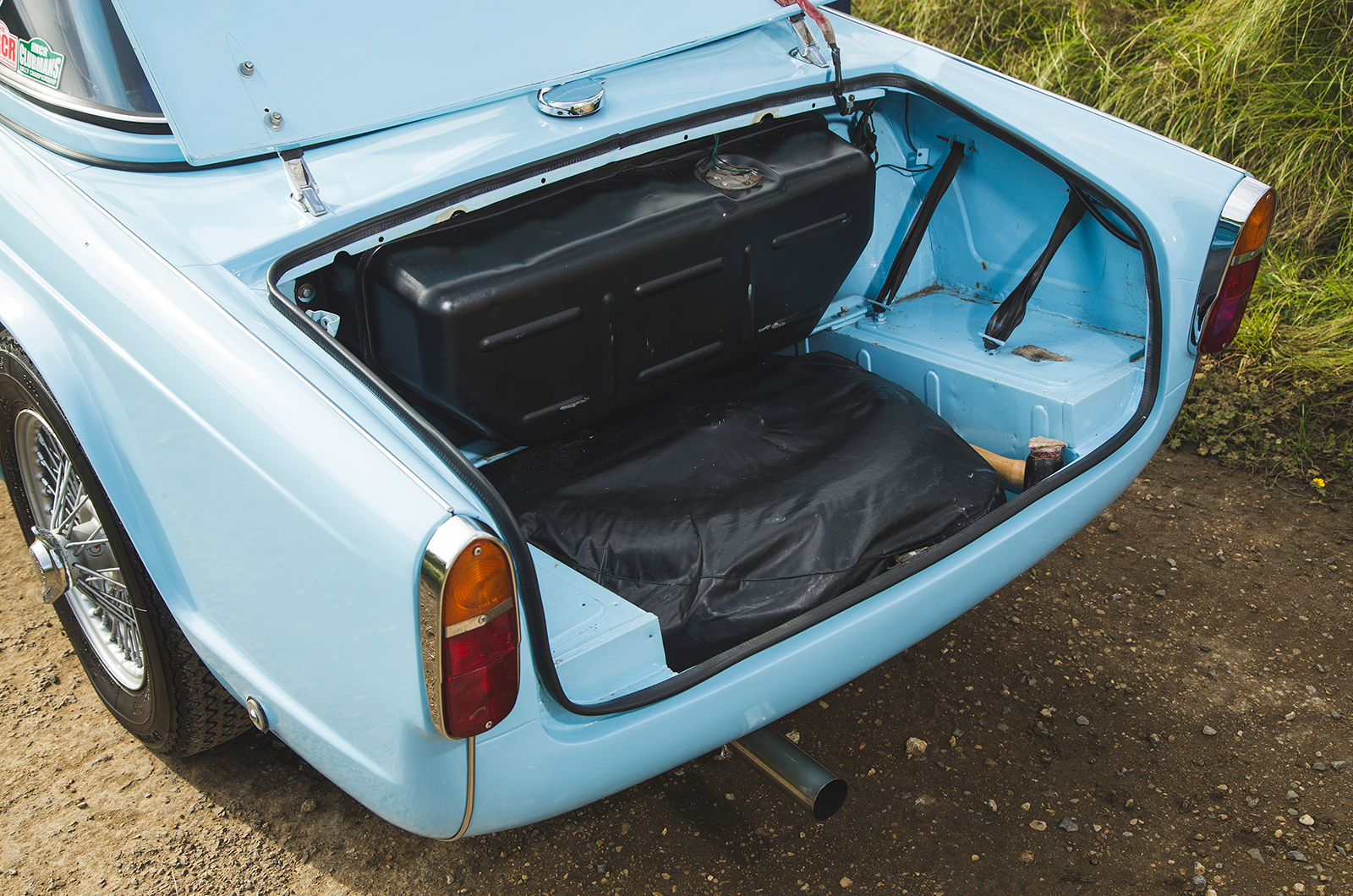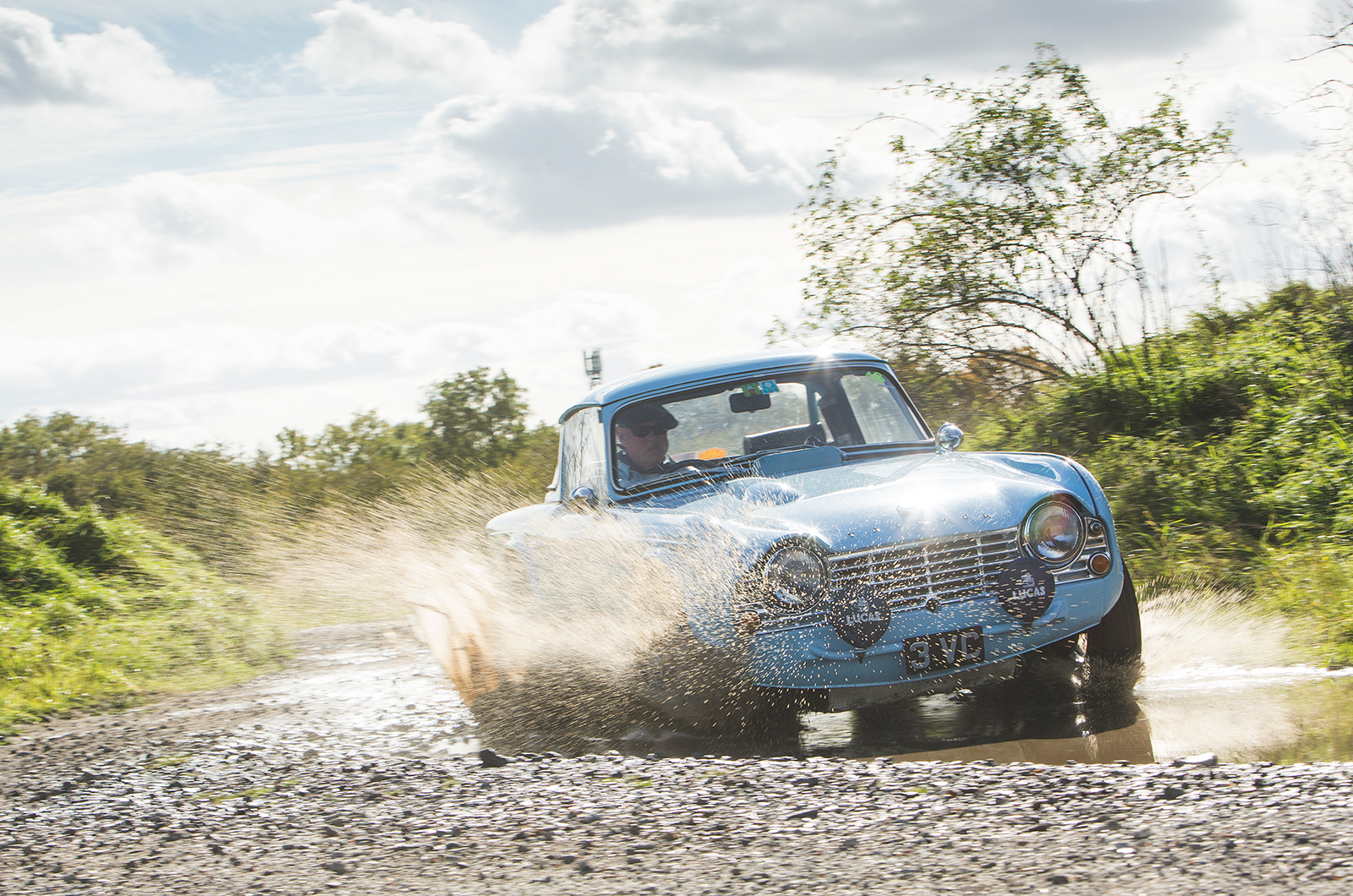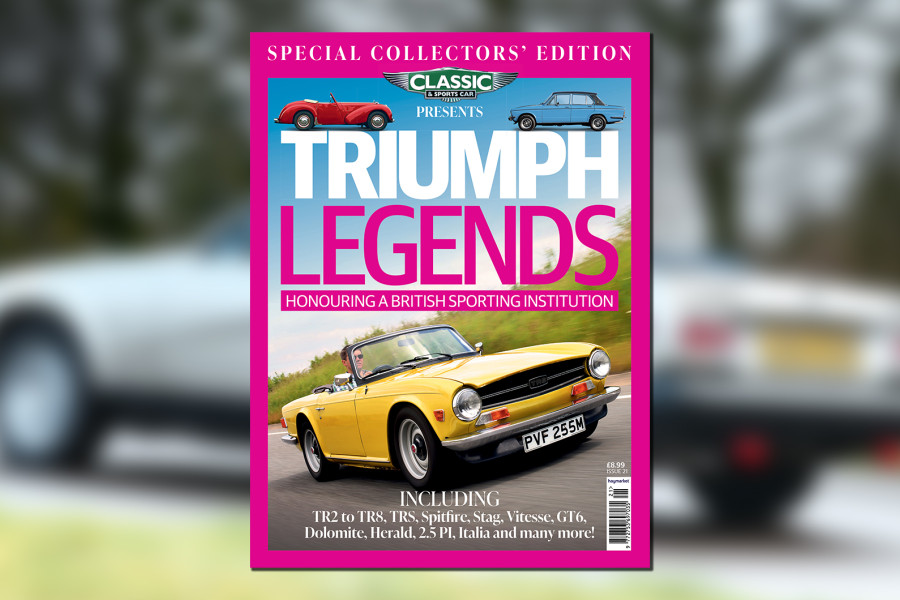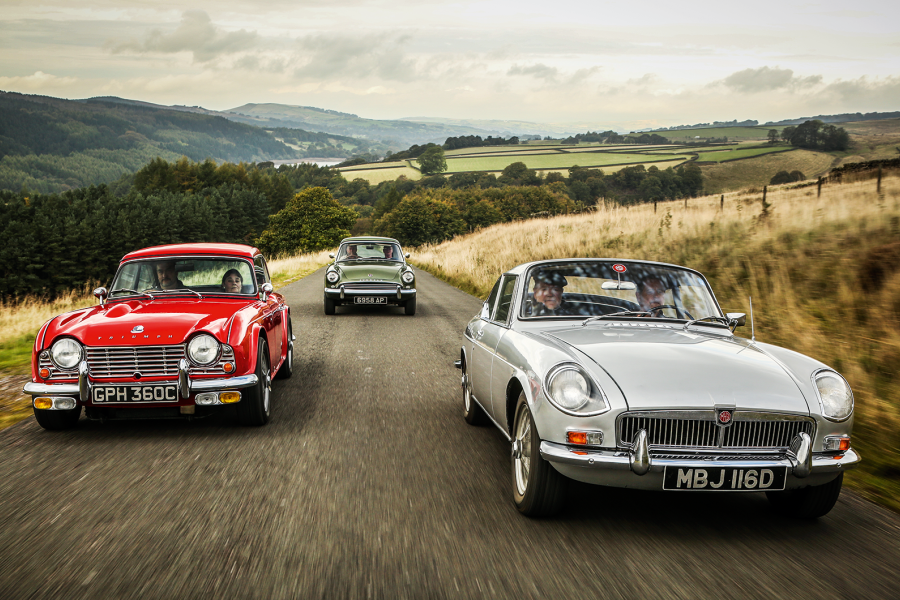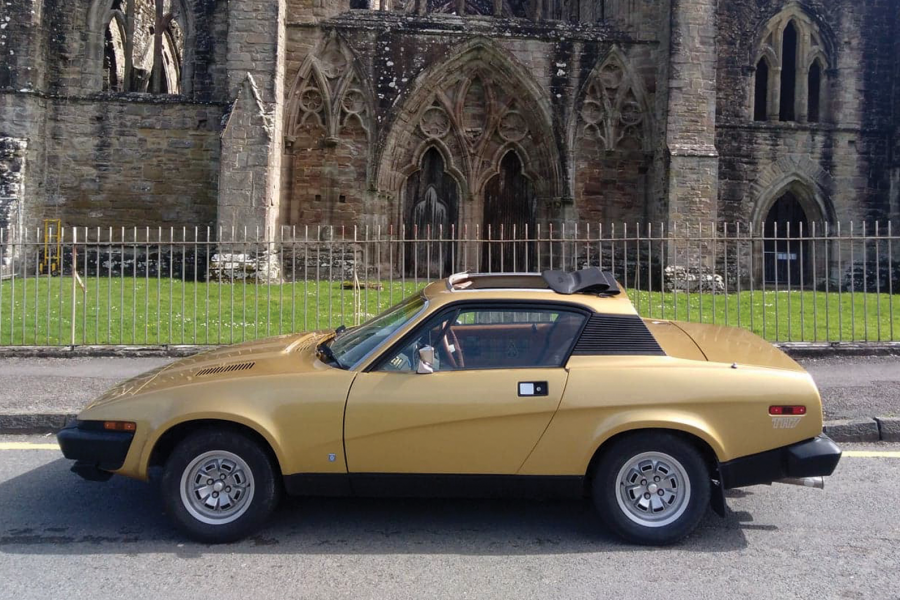The front suspension was deemed too badly damaged and it retired on the spot. Not all was lost, because the survivors swept the class led by Mike Sutcliffe, who won a Coupe des Alpes and finished fourth overall.
If these events had been a gentle, primarily Tarmac-based introduction to rallying, the remaining two would really put the TR4 to the test: the gruelling Liège-Sofia-Liège and the RAC, 38 stages of which were run through Forestry Commission land.
‘They were given a ration of petrol vouchers for BP sites – if they could find them. Otherwise they had to pay for fuel themselves’
Sprinzel proved his worth yet again on the European marathon, says Robson.
“He recommended that we fitted a stiff, full-length protective under-shield below the engine and the transmission, and that we should carry a second spare wheel, which could be (and was) mounted on the outside of the bootlid.
“Which meant that for this event 3 VC and its sisters reverted to using steel bootlids instead of the lightweight aluminium lids that had previously been fitted.
“To raise the nose of the cars a little, and minimise possible front-end chassis damage, the cars were fitted with aluminium spacers on top of the front suspension coil springs. Amazingly, this did nothing to disturb the handling.”
Today the TR4 is a much-loved touring companion, as much as anything else
Robson continues: “In addition, John persuaded Ray Henderson that he should take along 6 VC as a ‘high-speed chase car’ – or ‘spares on the hoof’ – for which his driver was none other than Vic Elford, who was just coming to the fore as a budding rally superstar.”
3 VC would lose its radiator, 4 VC crashed and 5 VC limped home with a damaged chassis… With 10 weeks before the RAC and with Swiss team member Thuner keen to contest his home rally, he was given 5 VC, refreshed and at last fuelled by twin-choke Weber carburettors, for the Geneva rally.
In the engine’s ultimate state of tune, peak power output was almost 135bhp and it was able to run to 6000rpm. “Considering all the limitations imposed by homologation regulations, fuel standards and operating budgets,” Robson says, “this was considered to be as competitive as could be hoped for.”
Brought back to the UK, this TR has been lovingly restored
These days, with enough of a budget, nominally the same set-up can produce in excess of 200bhp.
Thuner and the TR fared well, coming home second in class behind Hans Walter’s Porsche 356 1600 Carrera.
Although outclassed on the loose of the British event, the pale-blue sports cars from Canley did finish and placed second in the Manufacturer’s Team Prize.
It was to be Sprinzel’s final outing in 3 VC: the following month he announced his withdrawal from driving for ‘works’ teams, but he continued to compete as a privateer for many years until 1973.
His replacement at Triumph was rising star Elford, who would contest three rallies in 3 VC with varying degrees of success.
Though not its speciality, 3 VC is at home on the loose
His first outing on the 1963 Tulip Rally was with the car built to its ultimate specification, the last piece of the jigsaw being the limited-slip differential installed in the rear.
“Because this event was always run with regulations of the ‘let’s make it equally difficult for an outstandingly fast car to win’ mould,” recalls Robson, “the TR4s were always likely to struggle.
“However, in an event with many high-speed hillclimbs, they proved to be astonishingly fast, the ‘scratch time’ table showing that Elford’s 3 VC had been third overall, behind the Austin-Healey 3000 of the Morley twins and Henri Greder’s 4.7-litre Ford Falcon Sprint. The official handicap results put 3 VC fourth overall in the GT category.”
With Thuner and new recruit Roy Fidler, the team also won the GT Category Team Prize.
At one point, this ex-works TR was a student’s daily driver
The other two outings for Elford and 3 VC weren’t so successful. On the French Alpine Rally he and navigator David Stone, no doubt confident that they were competitive against the Big Healeys, left the road while chasing the Morley brothers.
Robson arrived on the scene fearing the worst, only to find that the two bodies stretched out on the roadside were merely soaking up the sun.
The car escaped damage and was pressed into service a month later on the Liège-Sofia-Liège with Don Grimshaw at the wheel – again it retired, after falling off its jack in the dark.
Quick Vic’s last outing was in November on the RAC, which was intended to be 3 VC’s final event. “On the second night the engine blew a cylinder-head gasket and would go no further,” says Robson. “This was depressing for me and the entire team because such a failing had never let us down in two hard seasons.”
The TR4’s elegant Giovanni Michelotti lines
With a move to Spifires and 2000s for the 1964 events, the four works TRs were on the verge of being mothballed when the US importer, with the aid of West Coast guru ‘Kas’ Kastner, asked to enter the team in that spring’s Canadian Shell 4000 rally.
Robson takes up the story: “Each of the [three] chosen cars, including 3VC, was completely stripped out, the aluminium-panelled bodyshell retained along with all the special running gear, powertrain, suspension, large fuel tank, electric wiring and cockpit equipment, and built around brand-new rally-specification left-hand-drive chassis frames.
“Before they were then trucked all the way up the coast to Vancouver, Kas’ shop treated them to new sets of magnesium-alloy road wheels of a type not then known in the UK [American Racing Equipment Silverstone IIs], and they were road-registered in the state of Oregon, where there were no administrative costs. 3 VC therefore became CAG 408.”
The addition of a rollbar is a subtle modern safety concession
“The Shell 4000 was a ‘time-speed-distance’ type of event, where accurate timekeeping and navigation were required of the co-driver,” continues Robson.
“None of the chosen crews in the TR4s appeared to be supreme at this craft. The pilot of 3 VC/CAG 408, Bert Rasmussen, was an enthusiastic and competent Canadian rally competitor and technician with the local Triumph importer, but he was by no means a world-class driver.
“Even so, the TR4s proved themselves to be the fastest sports cars in what was a very ‘rough-road’ event, and all three of them made it to the finish in Montreal.
“3VC had survived well and Rasmussen was proud to be a member of the Triumph ‘works’ team, which had taken home the GT Team Prize.”
In its ultimate state of tune, the TR4 had almost 135bhp
Following the new-world adventure the three TR4s were sold off through the US Triumph dealership network.
3 VC ended up with a student at the University of Rochester, who ran it every day and dabbled in amateur motorsport events before eventually parking the car up.
Neil Revington, an acknowledged marque expert, had already restored 4 VC, the lone works TR4 to have remained in the UK and which had been bought by enthusiast Ian Cornish.
The restoration had drawn a lot of attention in the TR community and in 1994 he received a callfrom Wisconsin, USA, offering him the former recce car, 6 VC. Within a year he was running the TR4 in historic rallies.
This Lucas lamp provides illumination when reversing
Further accolades followed and again the phone rang, this time from upstate New York. The caller said he had 5 VC, so again Revington was lured across the Atlantic.
What he found was a partially ‘restored’ but disassembled ex-works TR4. Yet on putting all the parts together prior to shipping, Revington discovered that it was not 5 but 3 VC.
As is so often the case, more damage had been done to the car by well-meaning restorers than by any Balkan dirt track, but crucially all of the original components were there.
The vendor had obviously invested a lot of money in a car that, in the eyes of an expert, needed to be re-done, so to raise the money to meet the inflated asking price Revington set up a trust to buy the car with two other partners. Once finished the trio would share the TR.
Wire wheels and bespoke side grilles on the works rally cars
Back in his Somerset workshops Revington was able to undo all the mistakes and, apart from the front wings, managed to revive all of the original parts including the aluminium bonnet that had been over-zealously shot-blasted before being filled with a tin of plod.
All four team cars survive, but 3 VC is arguably the most original.
Today, 25 years later and with a wealth of historic events under its belt, the car is superbly patinated and oozes period charm.
Slipping into the intimate and cosy cockpit, the first thing the driver sees is the upright Les Leston steering wheel in front of the regular TR dashboard, which is augmented by extra switches situated below.
It continues to be just as busy on the navigator’s side, with added Halda Twinmaster, clock, map light and further switches.
There is even a decent boot…
Although Revington used his own design of bucket seats, the upholstered bargeboard that sits between them is totally original.
Unlike in its prime, 3 VC does possess a rollbar, but with full carpeting it feels as much a car for touring as for charging up Alpine passes.
Still armed with its original drivetrain and engine, it is noticeably quicker than a regular TR4 yet isn’t a cammy, ill-tempered handful in traffic, as part-owner Gareth Firth confirms.
A phone call led to the rediscovery and repatriation of this important TR4
“It is more than happy to potter to the shops,” he says. “For its 50th birthday we took it on a European tour to the Alps and the Dolomites and back. It didn’t miss a beat.”
In fact, 3 VC is as comfortable and relaxing as any historic competition car could be.
The ride is relatively soft with very few rattles and the exhaust note isn’t too intrusive. All of which makes listening to the induction roar from those Weber carburettors that much easier.
Images: Luc Lacey
Thanks to Pendine
READ MORE
Colin McRae: the people’s champion
Signing off in style: Mitsubishi Lancer Evolution VI vs Evolution X
The greatest ’50s sports cars: XK120 vs MGA, AC Ace, Healey 100 & TR3A
Julian Balme
Julian Balme is a regular contributor to Classic & Sports Car and the owner (and driver) of many wonderful classics
